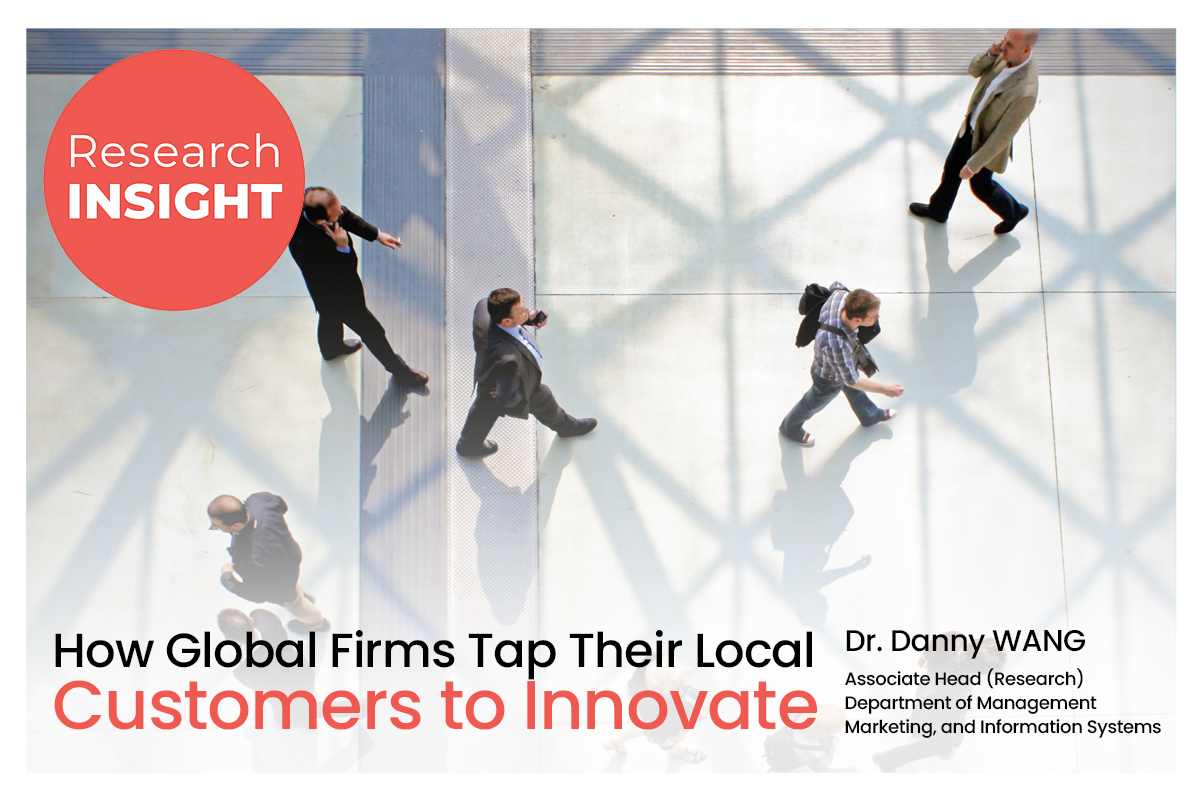School of business - research
How Global Firms Tap Their Local Customers to Innovate


Have you ever been frustrated by a suitcase with a lock on the wrong side or a software program with an infuriating help function, thinking you could have come up with a better design? Well, you may soon have your chance to make your views count. As multinational enterprises (MNEs) strive for global market dominance, their success hinges on their ability to develop new products. With subsidiaries spanning numerous countries, MNEs are uniquely poised to drive innovation. Seeking to harness the creative potential of their international branches, these corporations are increasingly leveraging an unexpected asset: their customers. A recent study explores[1] how MNEs can convert local insights into groundbreaking innovations tailored for diverse foreign markets.
Gradually extending their reach beyond domestic borders, multinational enterprises (MNEs) such as Microsoft and General Electric increasingly engage local customers in product development. This can be achieved by incorporating customer representatives into their New Product Development (NPD) teams or by asking them to submit their designs via crowdsourcing. While it’s intuitive to think that customer input can spark creativity, improve product performance, and enhance value, this approach also introduces complexities in knowledge management and can potentially undermine organizational flexibility. So how can foreign subsidiaries harness customer involvement to help drive new product development?
After analysing data from 230 wholly owned foreign subsidiaries of MNEs operating in China’s business-to-consumer sectors and actively involved in NPD, one conclusion is clear: customers can indeed add significant value to the development of new products, whether as a source of information (CIS) or as co-developers (CIC). Still, findings reveal that CIC appears more influential than CIS in bolstering a subsidiary’s innovation capability. Furthermore, the efficacy of customer involvement in shaping innovation capability depends on whether knowledge originates from headquarters or resides with local partners. Specifically, CIS, by adding to the broader strategic insights of the MNE, is more effective when product development depends on knowledge transfer from headquarters. Conversely, CIC tends to work better when success comes from harnessing the knowledge of local customers.
The lessons for firms are clear: integrating internal and external knowledge with customer involvement is crucial for boosting innovation in foreign subsidiaries. Customer involvement strategies should be tailored based on the source of knowledge. When knowledge primarily originates from headquarters, a CIS-driven approach is optimal. Conversely, when local partner knowledge is paramount, CIC should be employed to make customers true partners in product development. Striking this balance is essential, as it ensures alignment with both headquarters’ insights and local expertise, ultimately maximising the subsidiary’s innovation capabilities.
To fully leverage customer involvement, MNE subsidiaries must create incentives and coordination frameworks that foster meaningful customer engagement, since there are limits to the usefulness of focus groups and passive information sharing. This entails developing sophisticated knowledge-sharing platforms tailored to foster actual collaboration over time. A flexible approach to customer involvement, aligned with core knowledge sources, will empower subsidiaries to enhance their capabilities and strategically navigate their relationships, ultimately boosting innovation.
So the next time you have a brilliant idea to improve a product, just call the company! Maybe they’ll want you to help.
Reference:
[1] Zhang, T.J., Wang, D. T., Tse, C. H. & Tse, S. Y. “Enhancing subsidiary innovation capability through customer involvement in new product development: A contingent knowledge source perspective” Journal of Product Innovation Management 2024;41:86–111. https://doi.org/10.1111/jpim.12700